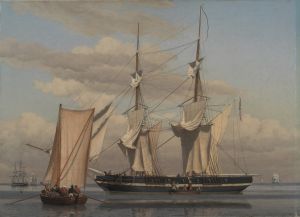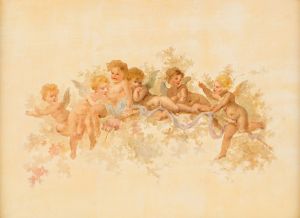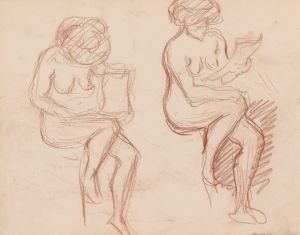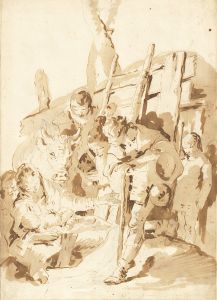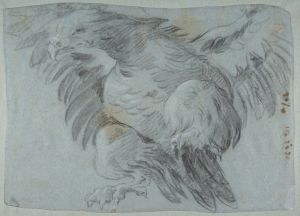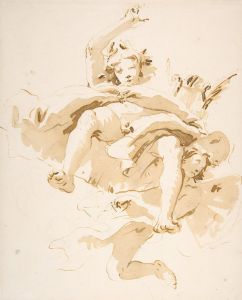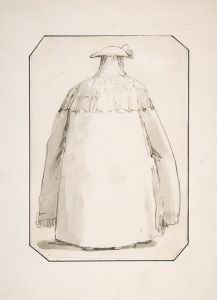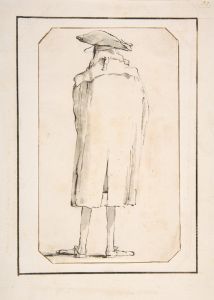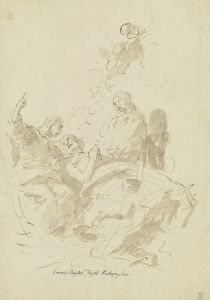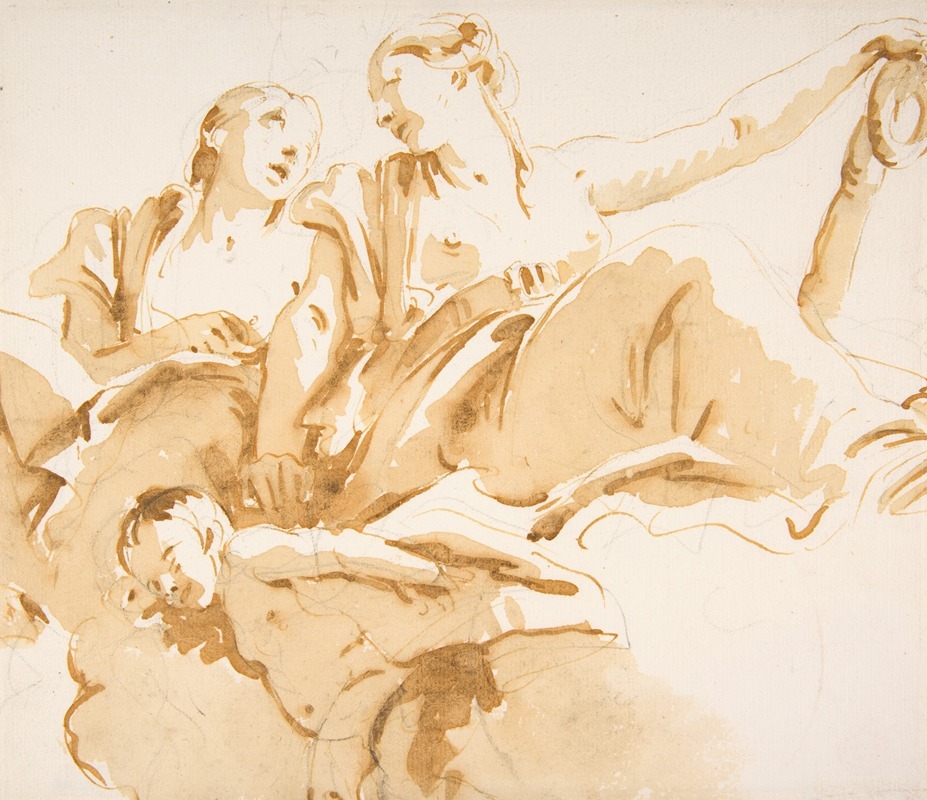
Two Women, One Holding an Anchor, and a Putto on Clouds
A hand-painted replica of Giovanni Battista Tiepolo’s masterpiece Two Women, One Holding an Anchor, and a Putto on Clouds, meticulously crafted by professional artists to capture the true essence of the original. Each piece is created with museum-quality canvas and rare mineral pigments, carefully painted by experienced artists with delicate brushstrokes and rich, layered colors to perfectly recreate the texture of the original artwork. Unlike machine-printed reproductions, this hand-painted version brings the painting to life, infused with the artist’s emotions and skill in every stroke. Whether for personal collection or home decoration, it instantly elevates the artistic atmosphere of any space.
"Two Women, One Holding an Anchor, and a Putto on Clouds" is a painting by the renowned Italian artist Giovanni Battista Tiepolo. Tiepolo, born in Venice in 1696, was a prolific painter and printmaker, known for his grandiose and dramatic compositions, often featuring mythological and religious themes. His work is characterized by its vibrant color palette, dynamic compositions, and masterful use of light and shadow.
This particular painting, "Two Women, One Holding an Anchor, and a Putto on Clouds," exemplifies Tiepolo's skill in creating ethereal and allegorical imagery. The painting features two women and a putto, a small cherubic figure, set against a backdrop of clouds. One of the women is depicted holding an anchor, a symbol traditionally associated with hope and steadfastness. The presence of the putto adds a playful and celestial element to the composition, a common motif in Tiepolo's work that reflects the influence of the Baroque period's fascination with the divine and the allegorical.
Tiepolo's use of clouds as a setting is significant, as it creates a sense of elevation and otherworldliness, transporting the viewer to a realm that is both dreamlike and symbolic. The clouds serve not only as a backdrop but also as a compositional element that enhances the painting's sense of movement and fluidity. This technique is typical of Tiepolo's style, where the boundaries between the earthly and the heavenly are often blurred, inviting viewers to contemplate the deeper meanings behind the imagery.
The painting's composition is carefully balanced, with the figures arranged in a way that guides the viewer's eye across the canvas. The woman holding the anchor is positioned prominently, drawing attention to the symbolic nature of her gesture. The second woman and the putto are arranged in a manner that complements the central figure, creating a harmonious and cohesive visual narrative.
Tiepolo's mastery of color is evident in this work, with a palette that includes soft pastels and rich, warm tones. The use of light and shadow adds depth and dimension to the figures, enhancing their three-dimensionality and bringing the scene to life. This attention to detail and the ability to convey emotion and movement through color and light are hallmarks of Tiepolo's artistic genius.
Throughout his career, Tiepolo was celebrated for his ability to infuse his paintings with a sense of grandeur and drama, qualities that are clearly present in "Two Women, One Holding an Anchor, and a Putto on Clouds." His work was highly sought after by patrons across Europe, and he completed numerous commissions for churches, palaces, and private collections. Today, Tiepolo is regarded as one of the greatest painters of the 18th century, and his works continue to be admired for their beauty, technical skill, and imaginative compositions.
While specific details about the commission or the original location of "Two Women, One Holding an Anchor, and a Putto on Clouds" may not be well-documented, the painting remains an excellent example of Tiepolo's ability to blend allegory with artistic innovation. It stands as a testament to his enduring legacy in the world of art, reflecting the cultural and artistic currents of his time while continuing to captivate audiences with its timeless elegance and sophistication.







